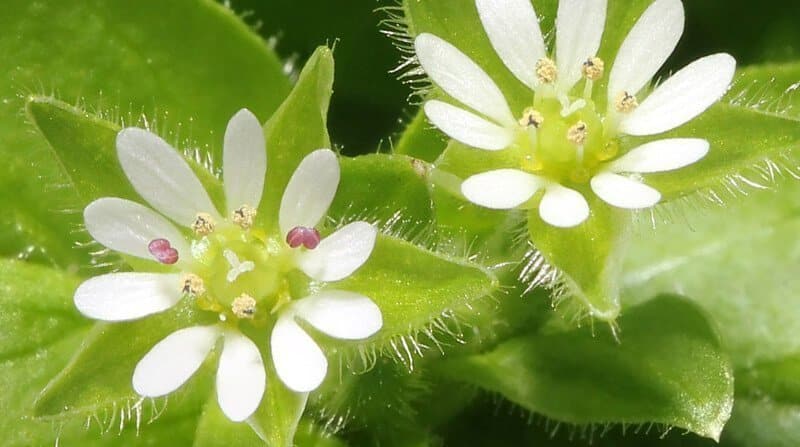There are two types of Chickweed which inhabit lawns in the UK;
- Common Chickweed
- Common Mouse-Ear Chickweed
Common Chickweed is much less common because it can’t stand regular mowing. Common Mouse Ear Chickweed, on the other hand, can spread at an alarming rate if not dealt with early on.
So let’s first look at how to identify the two, then how to kill, remove and prevent Chickweed from growing back.
Chickweed in a Nutshell
Here’s what you need to know about Chickweed
Appearance
The treatment for both types of Chickweed is the same. That said, it’s helpful to know which one you have in your lawn.
Common Mouse Ear Chickweed
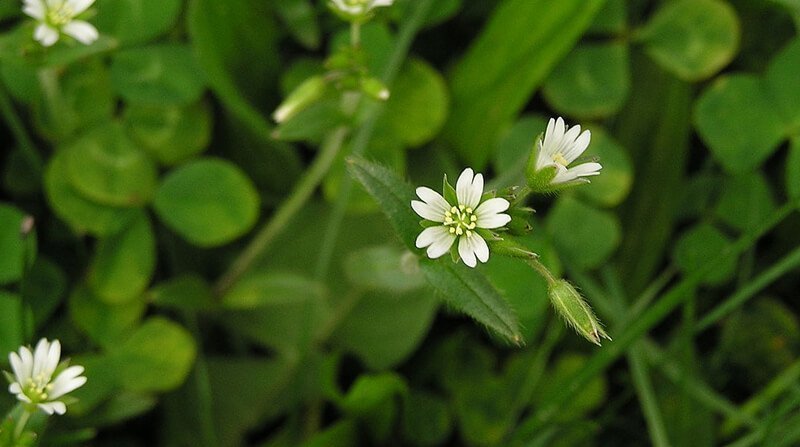
Common Mouse-Ear Chickweed or Cerastium holosteoides is the one that you’ll most commonly find in your lawn.
The leaves are oval shaped and hairy. They grow from a dense cluster of hairy, creeping stems which can form large mats, killing the grass underneath them.
Between April and September, you’ll see this weed bloom clusters of small white flowers.
You’ll know what it is as soon as you see it as it has a silvery look to it.
Common Chickweed
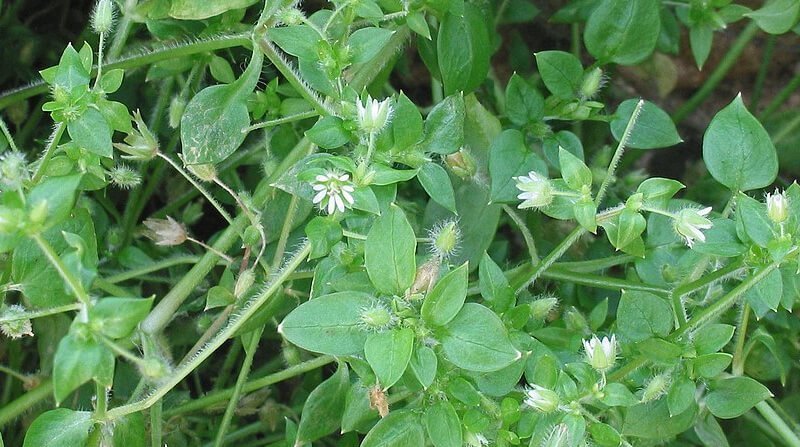
Common Chickweed or Stellaria media isn’t as common in lawns.
The leaves are oval but more round than Mouse-Ear Chickweed and they’re smooth instead of hairy.
Small white flowers bloom between February and November on hairy stems. When compared to Mouse-Ear Chickweed, these stems are very weak and don’t tolerate mowing well.
This is why it’s not very common in lawns, although you can find it from time to time.
A Perennial or Annual Weed
Common Mouse Ear Chickweed is a perennial weed which grows back and blooms with every season, which is why it’s more common in lawns.
Common Chickweed, on the other hand, is an annual weed and the plant dies at the end of the season. This makes it easier to control.
Preferred Habitat
Chickweed will happily grow in most soil types and conditions but each species has a preferred environment.
Common Mouse Ear Chickweed will spread very quickly in soil that is chalky and dry.
Common Chickweed favours new lawns sowed by seed.
How to Remove Chickweed From Your Lawn
If like most gardeners you don’t want to see Chickweed taking over your lawn and you want to get rid of it, you have a few options;
Remove them by Hand
Before you go and reach for the weedkiller, try removing them by hand. Because it creeps, it doesn’t root deeply so removing by hand pulling is possible.
If you have large areas of infestation, rake your lawn with a springbok rake to lift the stems from the ground.
You might not get it all out so be prepared to have another crack if grows back.
Kill it With a Selective Spot Spray Weed Killer
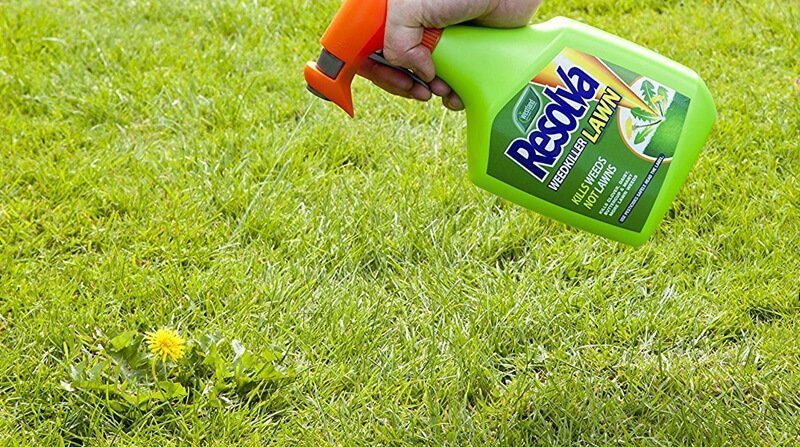
If it has returned in one or two places after removing the majority of it by hand, try using a selective spot spray weed. Selective weed killers will kill the majority of weeds while being gentle on grass.
Resolva Weedol Lawn Weed Killer is probably the best you can get for killing most species of Chickweed.
- Small spray bottle ideal for small areas
- Non-glyphosate formulation
Treat the Whole Lawn With a Selective Weedkiller Concentrate
If Chickweed is running amock along with other weeds like Dandelions and Daisies then spot treatment isn’t the best idea.
Instead, you’ll need to treat the whole lawn with a selective weedkiller concentrate like Scotts Weedol Lawn Weedkiller Concentrate. Again, this is your best option for killing Chickweed, as well as other weeds.
- Apply through a sprayer or watering can
- Non-glyphosate formulation
It’s is designed to be mixed with water and applied using a watering can or knapsack sprayer.
When using weedkiller concentrates, however, you need to read the instructions carefully and dilute it accurately. Make it too strong and you risk killing the grass but diluting it too much could result in the weeds not dying.
Read: The Best Weed Killers For Grass
How to Prevent Chickweed From Returning
If you have Chickweed in your lawn, chances are you have other lawn weeds growing in too. This is a classic sign that your lawn isn’t as healthy as it could (or should) be.
Killing and removing weeds is only half the battle. If you don’t take steps to improve the health of your lawn they will quickly grow again. Sometimes the same weeds will inhabit the soil, other times you’ll find new ones popping up.
By keeping your lawn healthy with a dense covering of grass, there will be no room for weeds to grow. Your lawn will look beautiful all the time.
Here are the steps you need to take to keep your lawn healthy;
Cut the Grass Often

This is by far the most important part of lawn care.
Cut your grass regularly.
When growth conditions are at their best in spring and autumn cut the grass at least once a week. In the summer when growth slows down, cut it at least once every two weeks. Once every ten 10 days is best.
Cutting the grass regularly prevents it from growing upwards and forces it to sprout sideways and grow new leaves. This results in a denser covering of grass which means less room for weeds.
A big mistake people make when mowing the lawn is to cut the grass too short. By raising the cutting height of your lawnmower, the grass will be slightly longer but it starves any weed seeds of the light they need to germinate and grow.
Read: How to Mow the Lawn Like a Pro: Everything You Should Know About Grass Cutting
Also Read: Choosing the Right Lawn Mower For You and Your Lawn
Scarify Your Lawn to Remove Excess Thatch
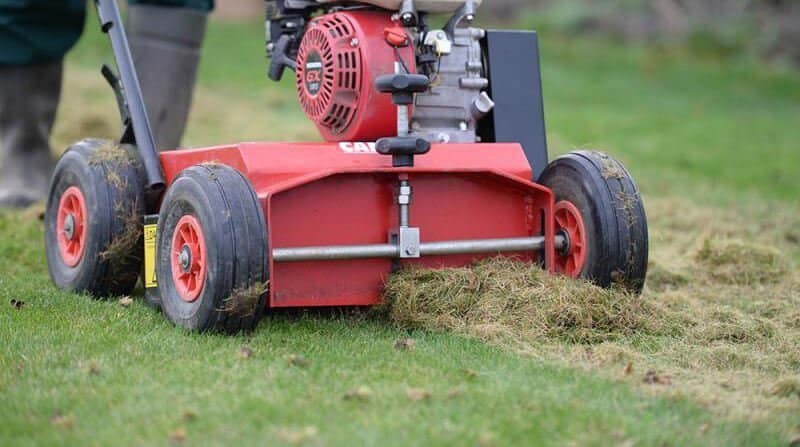
Thatch is a spongy layer that sits between the grass and soil. It’s made up living and dead organic material, predominantly dead grass roots and leaves.
Having some thatch in your lawn is a good thing because it prevents disease. However too much can also prevent air, water and nutrients from reaching the soil. This means the roots of the grass can’t absorb the necessary ingredients to produce food and grow.
The result is a weak, unhealthy lawn with more weeds or moss than grass.
Scarifying your lawn will remove much of this thatch and open up the soil so water, air, and nutrients can penetrate it. In turn, the grass can consume it, produce food and grow strong.
Read: Lawn Scarification: Why, When and How to Scarify Your Lawn (The Ultimate Guide)
Also Read: Which Lawn Scarifier is the Best? How to Choose the Right One For You and Your Lawn
Reduce Soil Compaction By Aerating Your Lawn
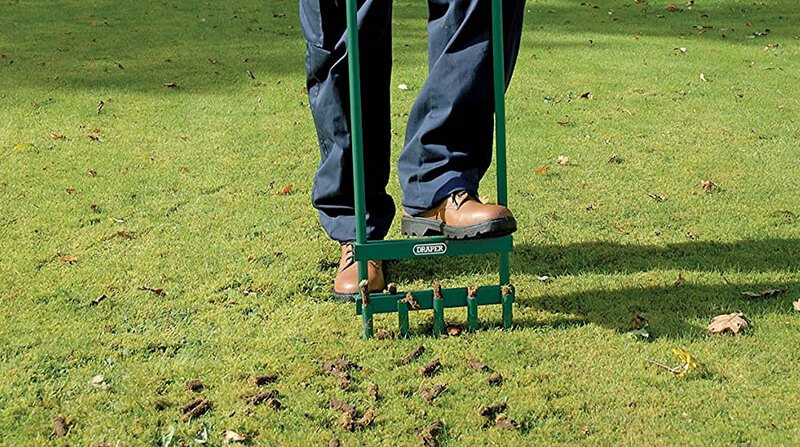
Compacted soil is the result of heavy lawn use.
Kids and pets playing on it through the summer is a prime example of this.
The forces that are put through during times of heavy use cause the soil particles to be pressed together, squeezing out air and water. It also prevents them along with other nutrients from penetrating the soil so the grass can’t get what it needs to grow and survive.
Other areas of your lawn are also prone to compaction; like around the washing line or if you have garden furniture on your lawn, or the route that your postman takes to the front door.
Aerating your lawn relieves compaction and create space in the soil for air, water and nutrients to penetrate.
Read: Lawn Aeration: Everything You Need to Know About Aerating Your Lawn (The Ultimate Guide)
Fertilise Your Lawn with a Good Quality Fertiliser
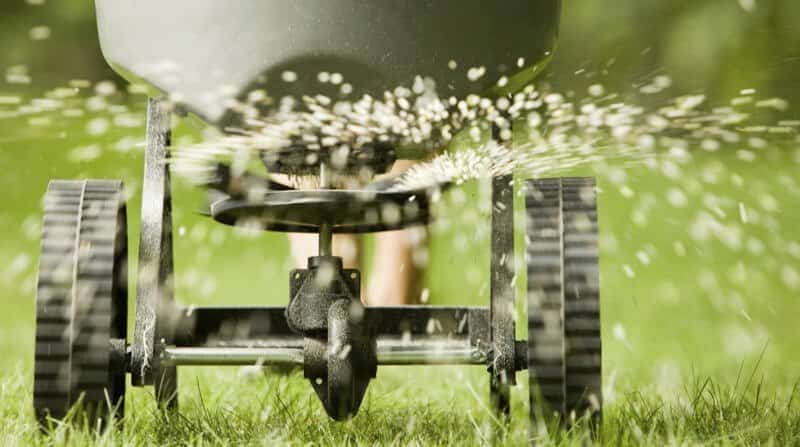
Many beginner gardeners apply fertiliser to their lawns and complain that it doesn’t work.
What they fail to understand is that when their lawn is thick with thatch and the soil is compacted the nutrients in the fertiliser can’t penetrate into the soil. It just sits above the surface and has no effect at all.
If your lawn is thick with weeds, scarify and aerate the lawn, then apply a good quality fertiliser. Your lawn might only need scarifying once every two years or so and aerating in the spring or autumn.
Just one application of a good quality, slow-release fertiliser will improve the health of your lawn immeasurably. It’ll promote good grass growth causing the grass to outcompete the weeds.
Read: Lawn Fertiliser: What, Why, When and How to Feed Your Lawn
Also Read: Which is the Best Lawn Fertiliser and Feed and Weed? Granular and Liquid Feeds Tested
Now it’s Over to You
Like most weeds, killing and removing Chickweed is a fairly simple process.
Keeping them at bay is a little more involved and seems like a lot of work but it really isn’t.
Just;
- Mow your lawn regularly.
- Scarify every couple of years in the autumn.
- Aerate in the Spring and/or Autumn.
- Give your lawn at least one application of fertiliser per year, and
- Spot spray any weeds that might make an appearance.
That’s all there is to it.
Anyway, if you have any questions or suggestions let me know in the comments.
I’d also love to see your before and after pictures so if you have them, send them in and all share them with our community.
